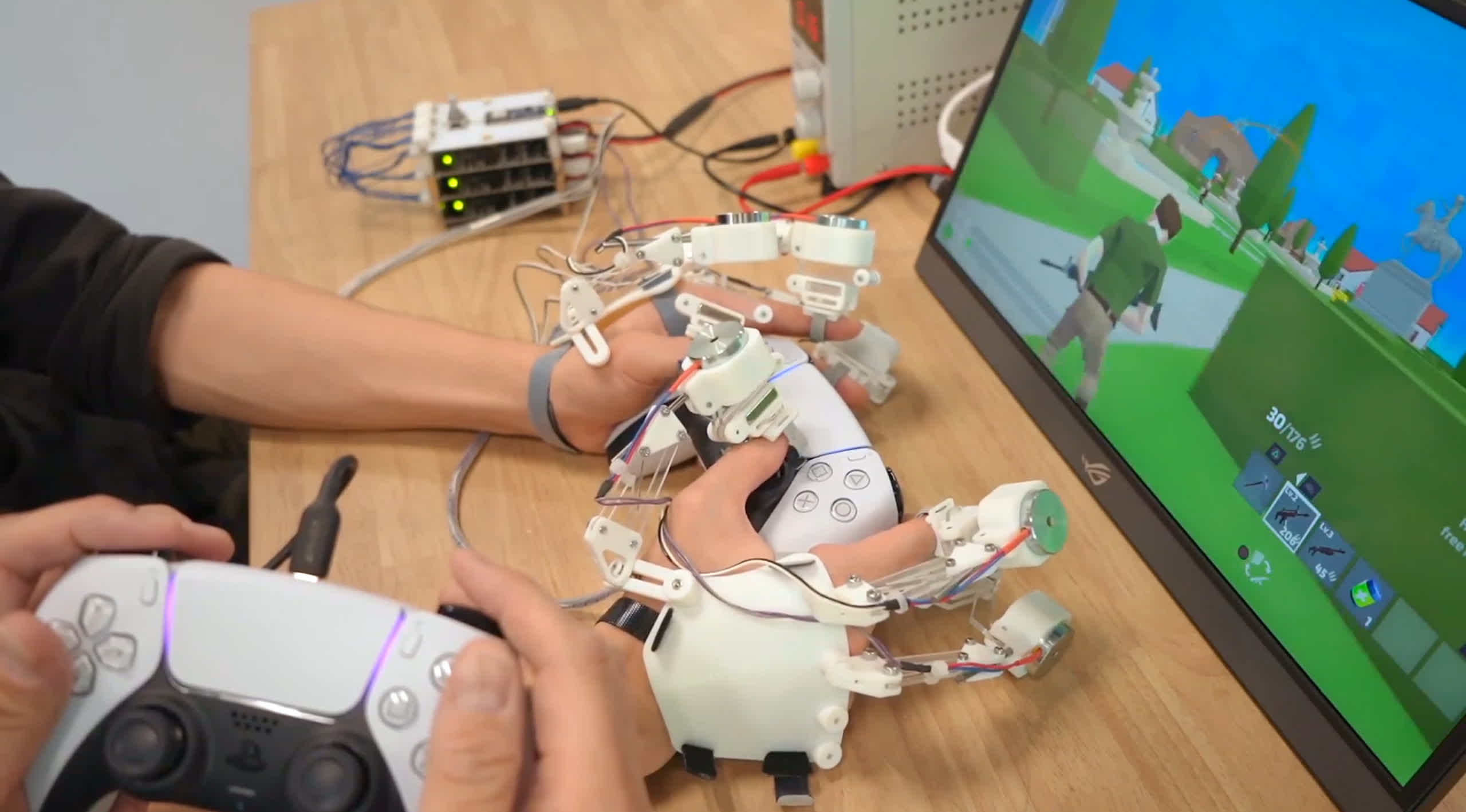What just happened? Looking to gain an advantage over your gaming rivals? Researchers have developed a new wearable device that could give your trigger finger superhuman speed. It's called Magnus, and it's an electromagnetic hand exoskeleton that moves your fingers at blisteringly fast speeds.
The project is a collaboration between teams at Sony Computer Science Laboratories, the University of Maryland, the University of Tsukuba, and the Okinawa Institute of Science and Technology. The researchers joined forces to develop a force-feedback system that can actuate much faster than traditional approaches using motors or electrical muscle stimulation.
Older technologies have limitations in scenarios that require super precise timing and rapid actuation, such as gaming or drumming.
Magnus is an Arduino-powered exoskeleton that uses pairs of electromagnets and permanent magnets to actuate your fingers with superhuman quickness. In their tests, it reached peak force in just 11.7 milliseconds, over four times faster than the 56.4 milliseconds an electrical muscle stimulation system can achieve. Despite this speed, the researchers say the device doesn't restrict natural hand movements and that finger actuation is painless.

The exoskeleton is made from 3D-printed pieces along with magnetic actuators. There's also a heatsink to prevent overheating from the rapid electromagnetic pulses; the operation is run by an Arduino Nano 33 BLE board. The whole setup weighs around 9.9 ounces for a three-finger version or 15.9 ounces for a five-finger version.
The researchers see a couple of potential applications for their contraption. One is using it for hyper-speed drumming demos to simulate playing "complex and high-speed finger drum sequences beyond their original capabilities, while minimizing the sense of intervention from the device compared to other force-feedback systems."
Another potential use is enabling new forms of gesture-based communication between two people. They envision a shooting game where one player aims while the other uses the exoskeleton to handle ultra-fast firing through precise finger actuations from the device.
Personally, I see it as something that might finally beat the 70+ clicks per second record set by this Lego auto-clicker. Any use in gaming, however, will likely lead to controversy. We saw that recently with Razer's new keyboard and its ability to virtually eliminate input lag when rapidly alternating directions. Some players cried foul since it enabled moves that should be impossible in certain games. But the drumming demo certainly looks impressive.
